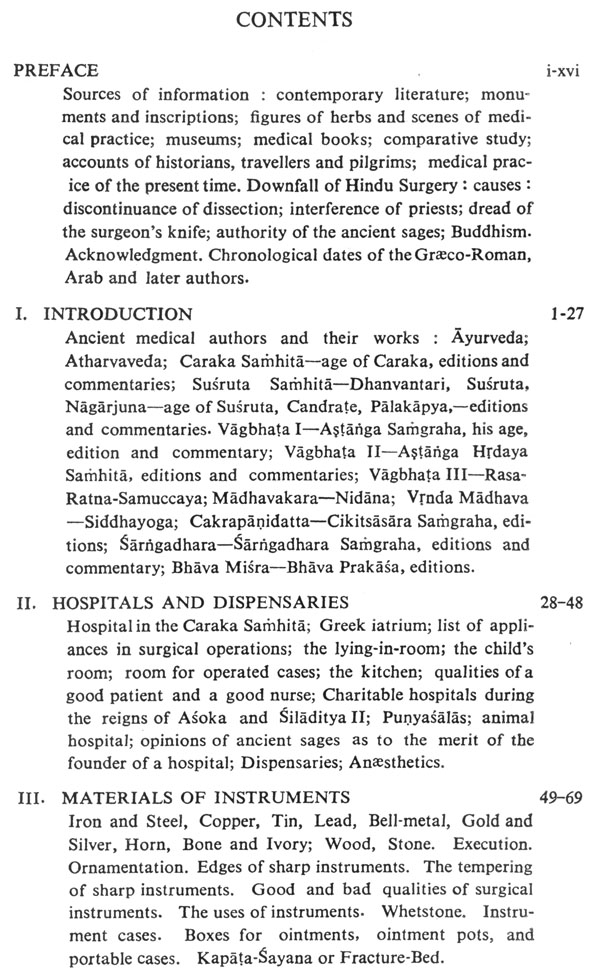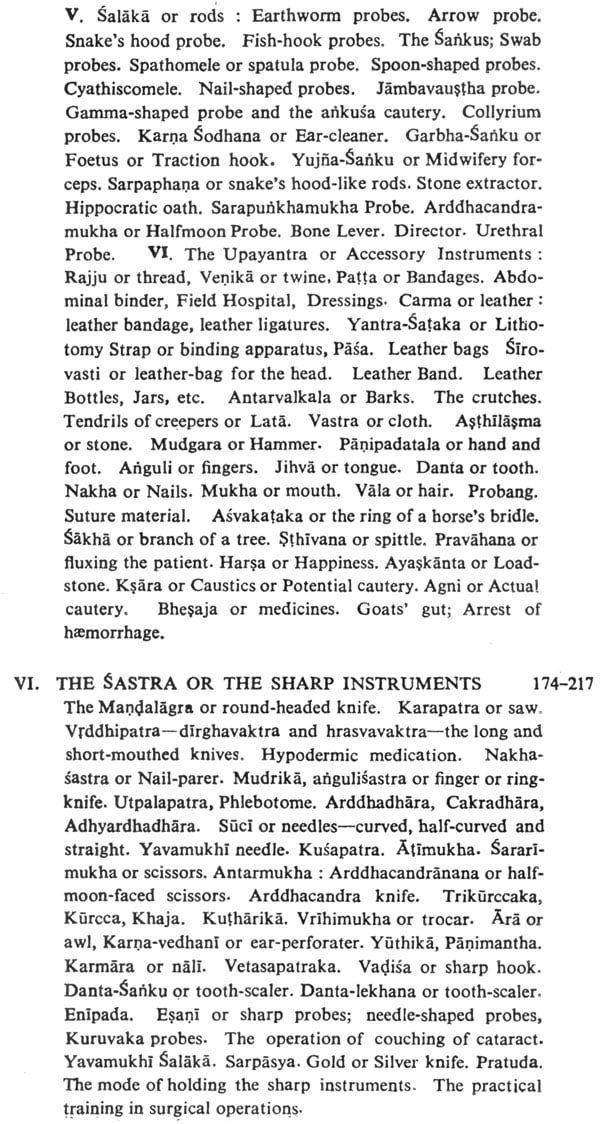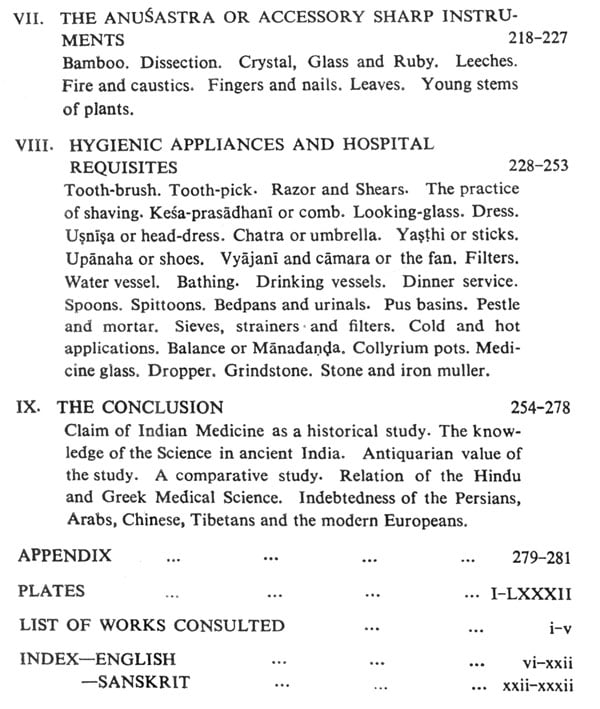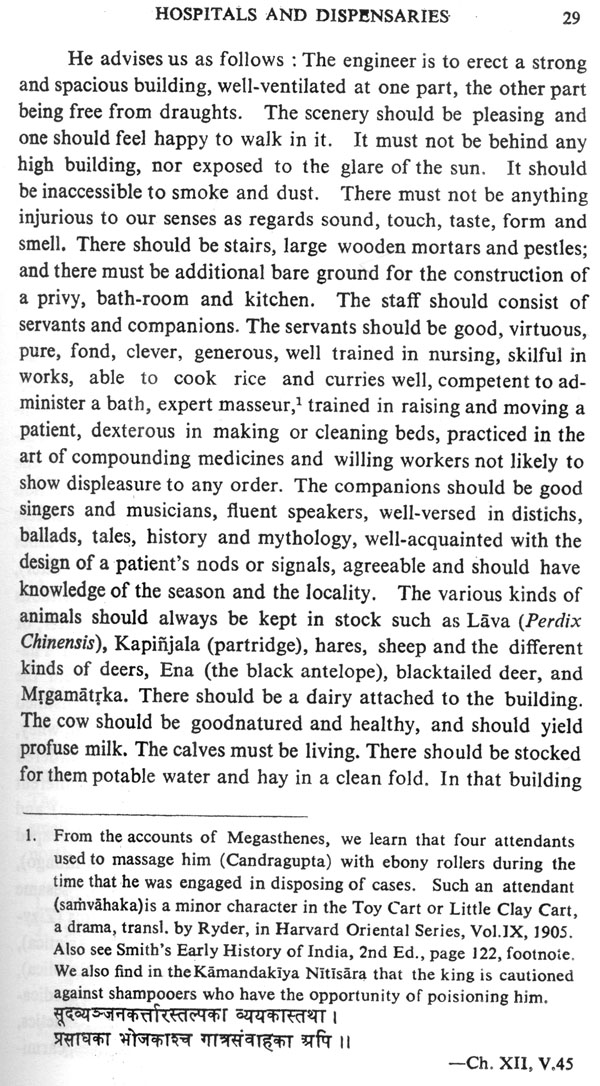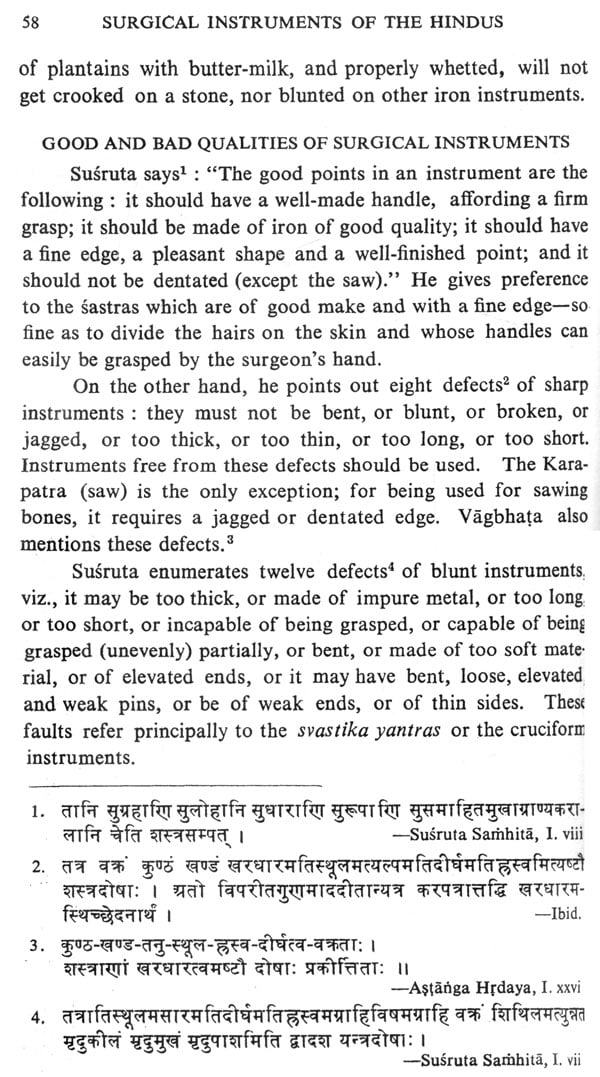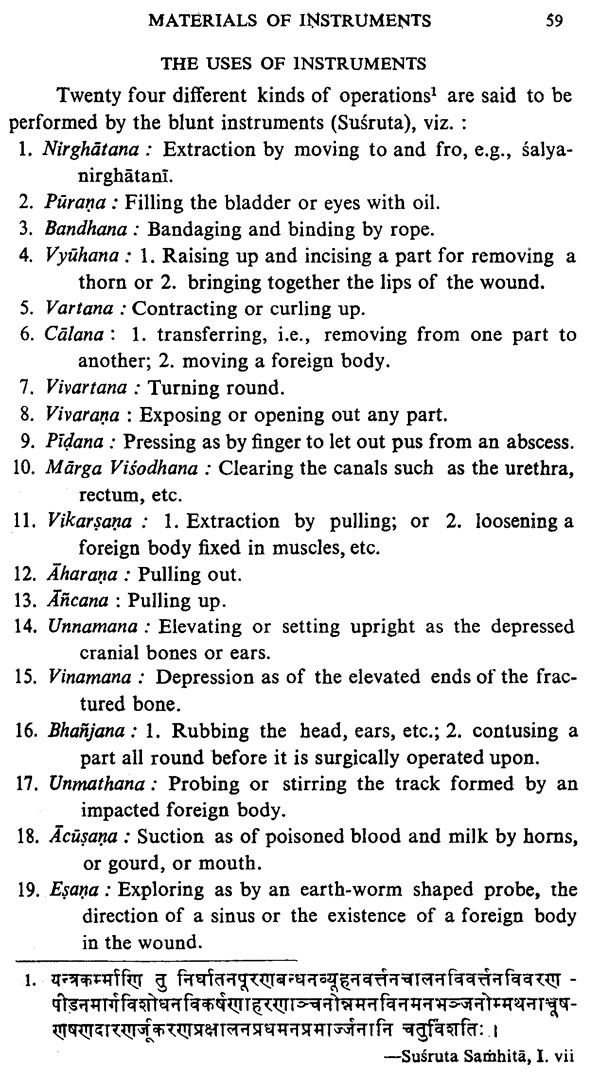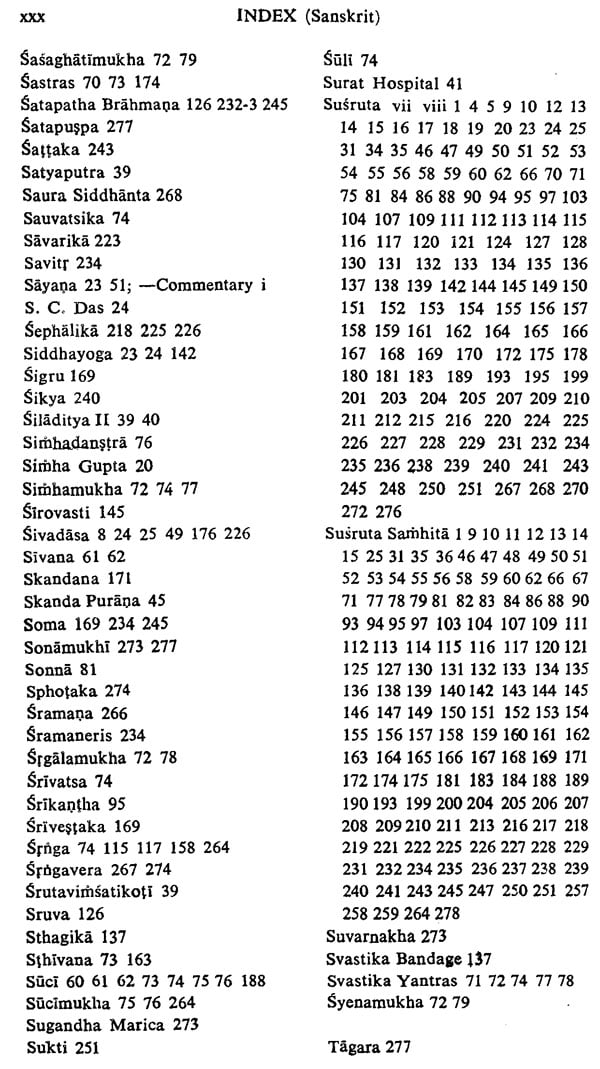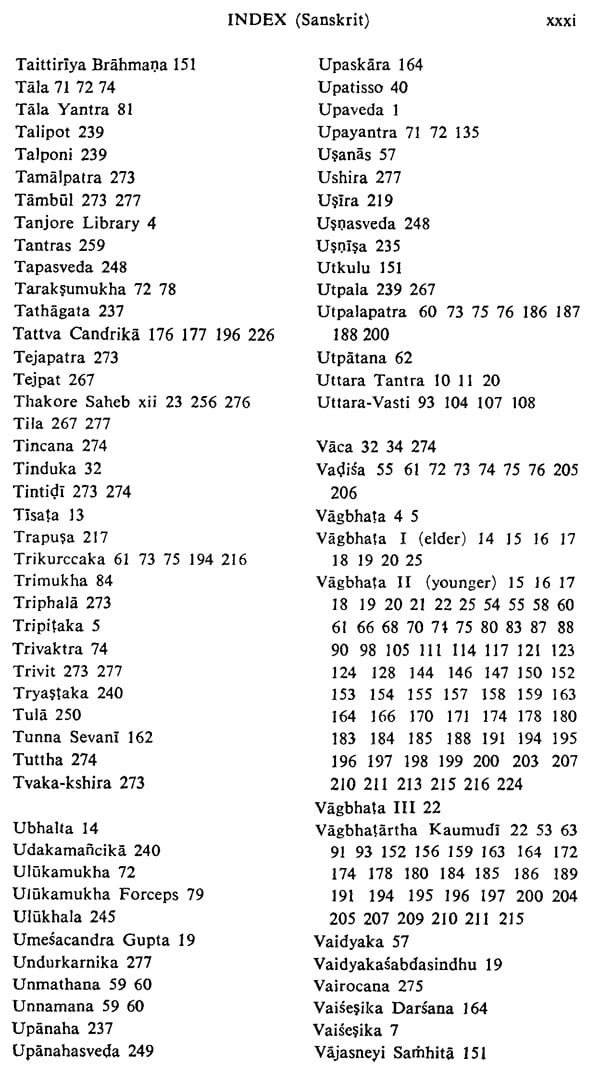
The Surgical Instruments of the Hindus
Book Specification
| Item Code: | NAY425 |
| Author: | Girindra Nath Mukhopadhyaya |
| Publisher: | Chaukhambha Surbharati Prakashan |
| Language: | English |
| Edition: | 2021 |
| ISBN: | 9789389665543 |
| Pages: | 344 (Throughout B/w Illustrations) |
| Cover: | PAPERBACK |
| Other Details | 8.50 X 5.50 inch |
| Weight | 530 gm |
Book Description
First is the evidence of contemporary literature about the craft of physicians and surgeons, since Vie are sure that there has always been a class of medicine men of one kind or another. Thus we find in the Rig-Veda the use of artificial limb as a substitute for a limb accidentally lost." From the Mahabharata, we learn that when Pariksit, the king of the Korus, became certain of his approaching death by snake-bite, due to a curse uttered by a sage, he tried to protect himself by the constant attendance of a number of physicians, who were well supplied with antidotes." Again, it is stated that when the great warrior Bhisma was wounded in war, the skilful army surgeons came to him with the necessary medical and surgical appliances to treat his wounds.' From the Mahabharata, we learn that Jivaka, the personal physician of Buddha, practiced cranial surgery with success’s In the Mahavikagnimitra, we find the use of charms-a signet ring as a healing talisman for the cure of snake-bite;" and also we find there a reference to a class of physicians who specialized themselves in Toxicology (Visa- vaidya)," and were held in high esteem for their professional skill by the public.' From the Bhojaprabandha, the administration of some kind of anesthetic by inhalation before surgical operations can be ascertained. Similarly from the books 01 Law, we know the relations of the profession to society in general. In the Manusamhita, we have unmistakable testimony; of the decline of Hindu surgery as the author prohibits t1H eating of cooked rice from the hands of a surgeon."
Secondly, monuments or inscriptions scattered about the country have to be searched, as references found therein to the science of medicine are more trustworthy than document: which may have been more or less tampered with by interpolations of subsequent writers. Thus we learn from the edicts 01 Asoka, that hospitals were established by him in different part! of his kingdom, not only for the treatment of suffering humanity but also for the brute creation.
Ancient MEDICAL AUTHORS AND THEIR WORKS
The Science and Art of Medicine, like many other different branches of learning, originated with the Hindus. They consider the art of healing as an Upaveda and it is generally known as Ayurveda that is the art of prolonging life. Like the Vedas, they trace the origin of the science to God, the fountain of all true knowledge. Brahma transmitted this heaven-born science to this world for the benefit of the mortals in one of the sacred writings, the Ayurveda.
It was composed as a sub-division of the Atharvaveda and consisted originally of an 'Iaksa slokas' or a hundred thousand stanzas, divided into a thousand chapters. Then considering the short span of life and inadequate intelligence of man, he divided the book into eight parts! as follows:
Salya Tantra or Major Surgery.
Salakya Tantra or Surgery of parts above the Clavicles. Kaya Cikitsa or Inner Medicine.
Bhutavidya or Demonology.
Kaumarabharataya or the Science of Pediatrics.
Agada or Toxicology.
Rasayana or Treatment to prolong life.
Vajikarat) a or Treatment to stimulate the sexual power.
The book is no more available now, Susruta being the authority for the above information."
A different view is held by others, who trace the origin of Hindu Medicine in the verses of the Rig-Veda.
ATHARVAVEDA
"On examining the contents of the Atharvaveda more in detail, we find that the hostile charms it contains are directed largely against various diseases or the demons which are supposed to cause them. There are spells to cure fever (takman), leprosy, jaundice, dropsy, scrofula, cough, ophthalmic, baldness, lack of vital power, fractures and wounds; the bite of snakes or injurious insects, and poison in general; mania and . other ailments. These charms are accompanied by the employment of appropriate herbs. Hence the Atharvaveda is the oldest literary monument of Indian Medicine."? This Veda cannot belong to a period later than 1000 B. C., but possibly earlier."
It exists in the recessions of two different schools. That of the Paippalada is only known in manuscript, discovered by Prof. Buhler in Kashmir and described by Prof. Roth in his tract Der Atharva Veda in Kashmir (1875). The printed text, edited by Roth and Whitney in Berlin in 1856, gives the recession of the Saunaka School.' It has been translated into English prose by Whitney in two Vols. into English verse by Griffith in two Vols. Benares, 1897, and with the omission of the unimportant hymns, by Bloomfield- into English prose, with notes, in Vol. XLIII of the Sacred Books of the East.
Book's Contents and Sample Pages
